Floating Island Dessert, or île flottante, are delicate clouds of poached meringues on a sea of delicious Crème Anglaise (custard)!
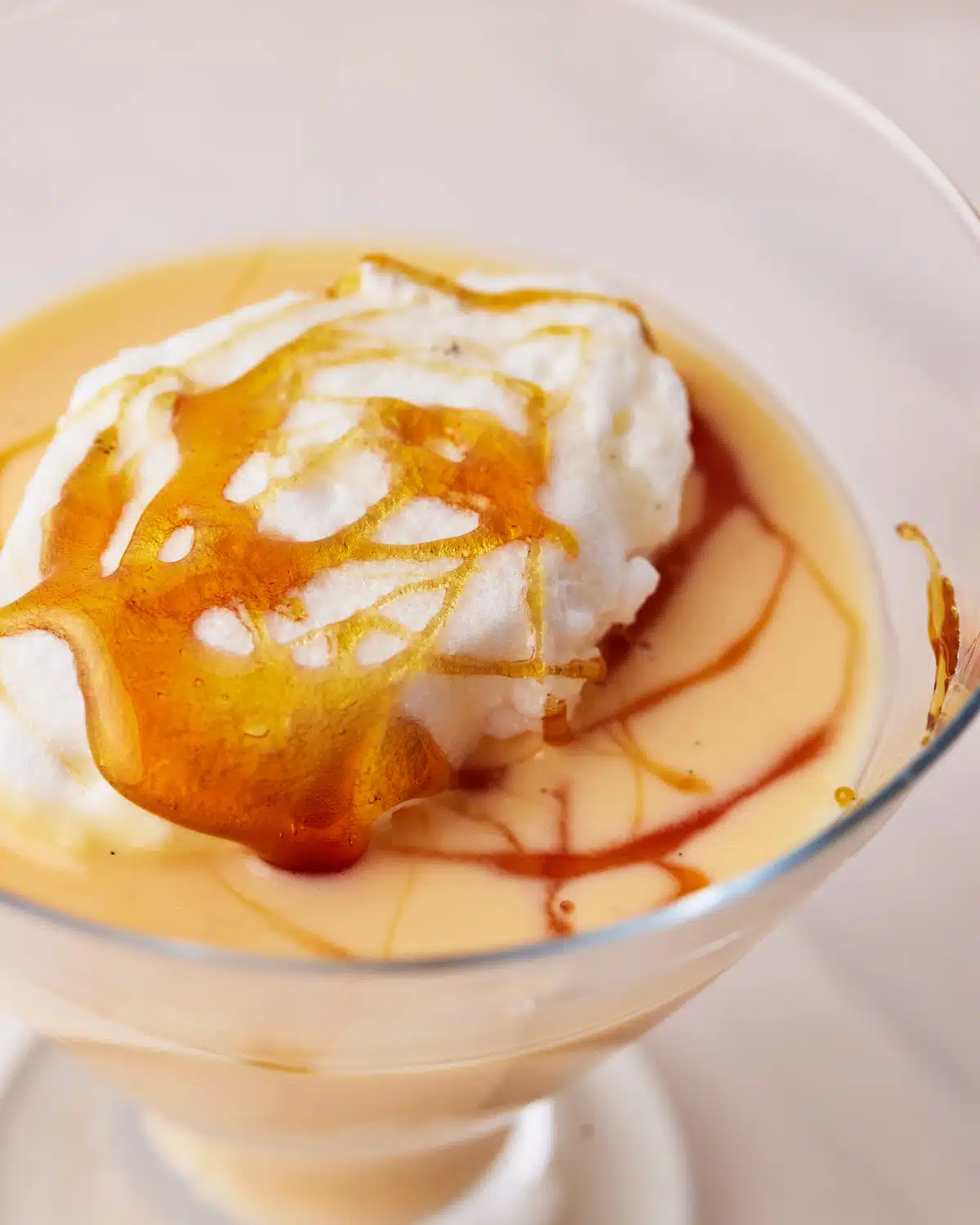
Reader Review:
We have the same dessert in Hungary. It is called "Bird's milk" and we used to have it made for us when we were sick. It was almost worth it to get ill! Thank you for the excellent recipe and detailed instructions.
⭐⭐⭐⭐⭐ - Peter
This classic French dessert is a wonderful and elegant dessert to serve at a dinner party. The poached meringue is incredibly light and soft, and the custard is rich and luxurious. Classically topped with caramel for a bit of crunch and color. I have also seen these affectionately called 'snow eggs', which I just love.
One of the things I love most about this floating island dessert is that it uses the whole eggs - the meringue uses the egg whites and the custard uses the egg yolks, so it is a wonderful combination in more than just flavor! That may sound trivial, but often when I am making meringue recipes like my classic Pavlova, or custard recipes like my Custard Filled Donuts, or Crème Brûlée, I am left with a bowl full of leftover whites or yolks, and I hate to waste food.
Jump to:
Why You'll Love This Recipe
- Elegant French dessert that is perfect for dinner parties.
- Super soft and light meringue in a pool of silky custard.
- The recipe uses up all of the egg yolks and whites, so there is no waste.
Ingredients
Though it may look like a complicated and fancy dessert, this floating island recipe actually uses only a few very simple ingredients. If you don't include a pinch of salt and some cornstarch for texture, there are really only 4 ingredients.
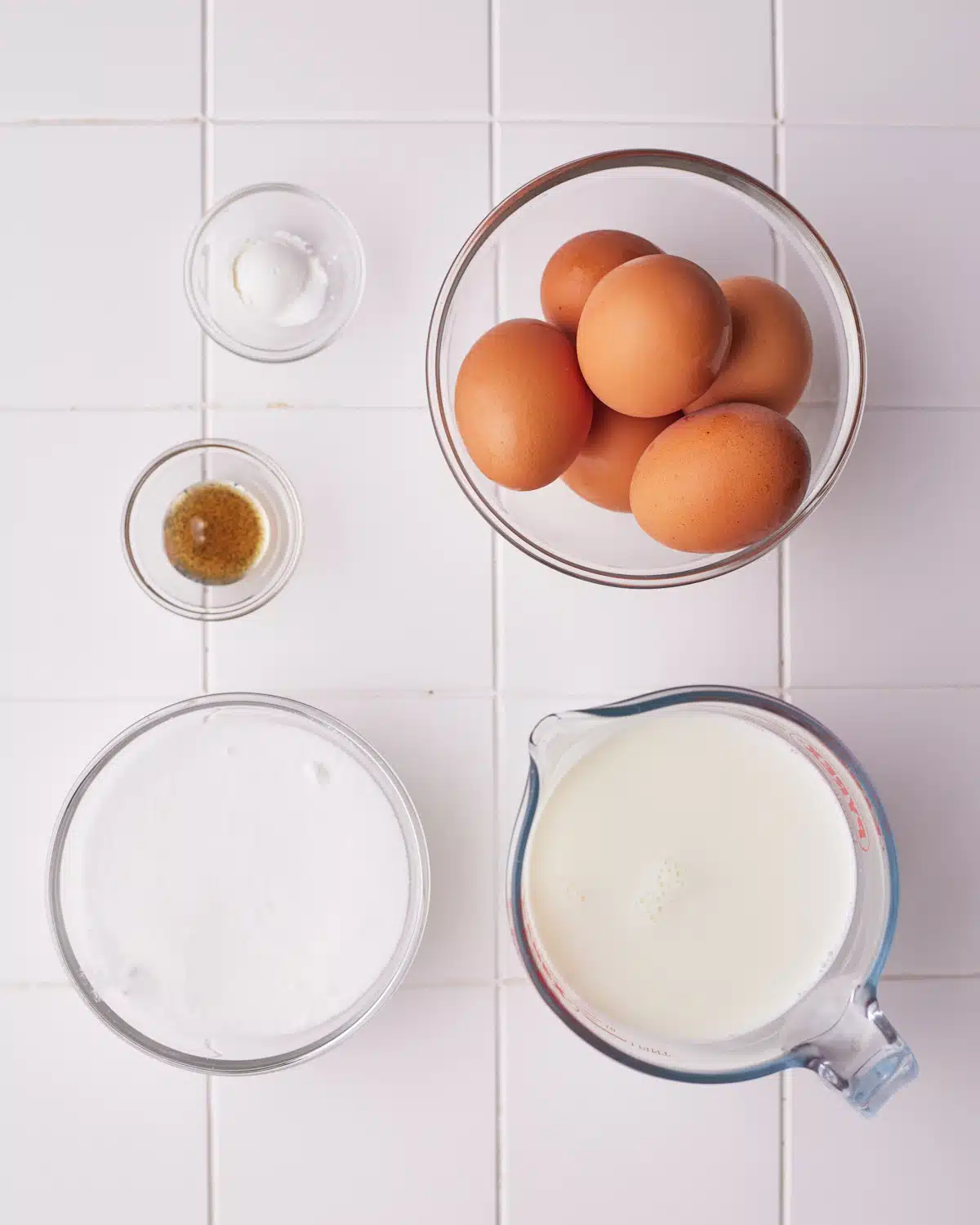
- Eggs - This recipe uses the egg whites for the meringue and the egg yolks for the custard, so the whole egg will be used! Make sure the eggs are at room temperature before beginning.
- Sugar - Use extra-fine white sugar for this (caster sugar in the UK) as we are making a French meringue and will need the sugar to dissolve easily into the egg whites.
- Milk - The milk will perform double duty in this recipe, we'll use it to poach the meringues, and then we'll strain it and use it to make the creme Anglaise. Make sure you use whole milk for this recipe.
- Vanilla - The vanilla flavor will really come through so try to use a high-quality vanilla extract or vanilla bean paste. If you have one available you can even use a vanilla pod.
See recipe card for quantities.
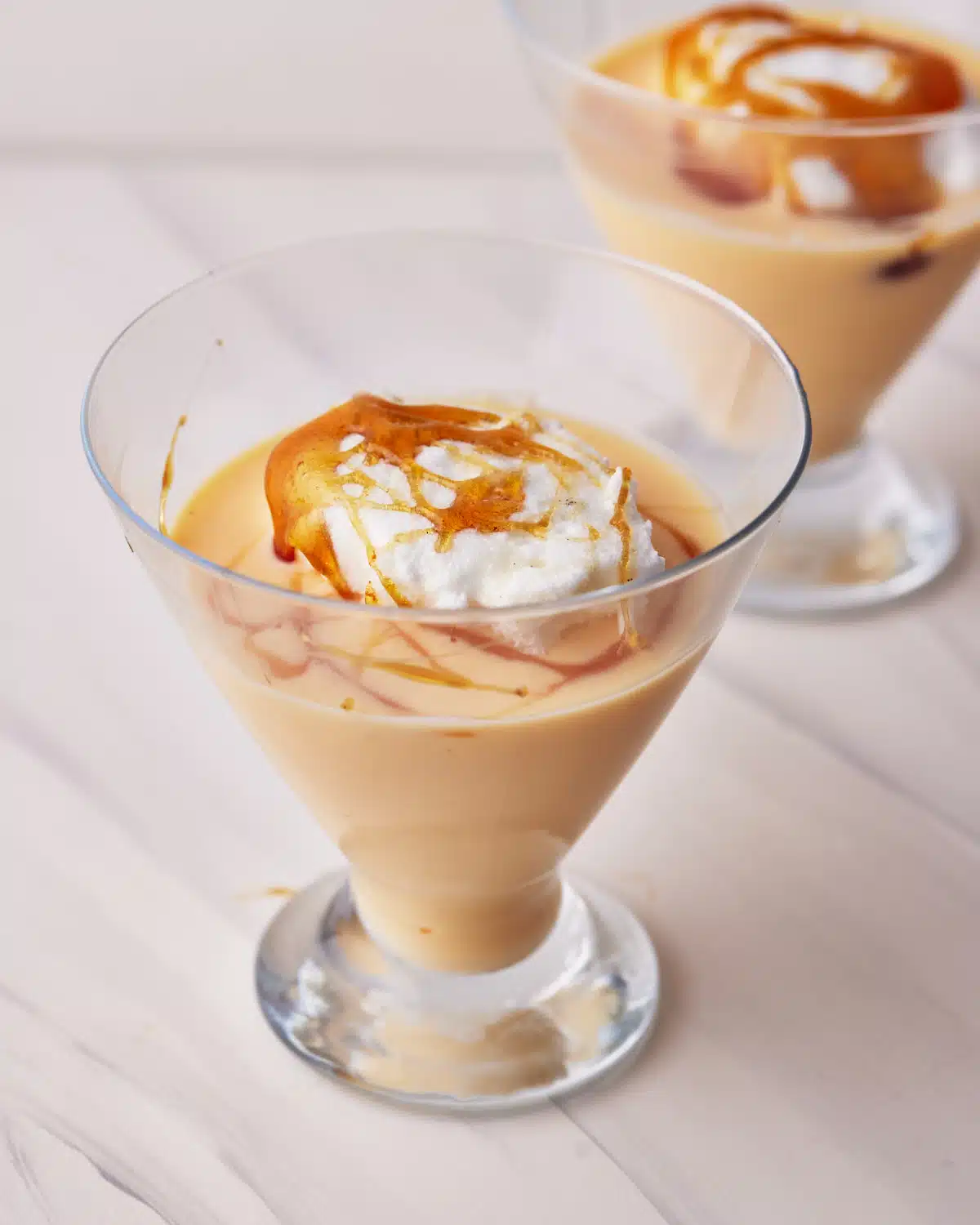
Make the Poached Meringues
This is a simple recipe, but poaching the meringues is a delicate process and it took me a few mistakes to figure out the best way to do it - so now I'll share that with you so you can get it perfect the first time!
- Separate the eggs into whites and yolks, being careful not to get even the tiniest drop of egg yolk into the whites. I find it best to break each egg into a small bowl, then separate into individual bowls for whites and yolks. This means that if you accidentally break a yolk, you won't have wasted your entire bowl of egg whites. Set the yolks aside for later.
- Measure out 1 cup of sugar and set the rest aside for later.
- Whip the egg whites on high speed with an electric mixer or a stand mixer with a whisk attachment.
- Once the egg mixture starts to foam up, you can start adding the sugar, one tablespoon at a time. Whip the egg whites for at least 10 seconds in between each addition so that the sugar dissolves. If you don't do this, you may end up with a grainy meringue. Keep going until all the sugar has been incorporated.
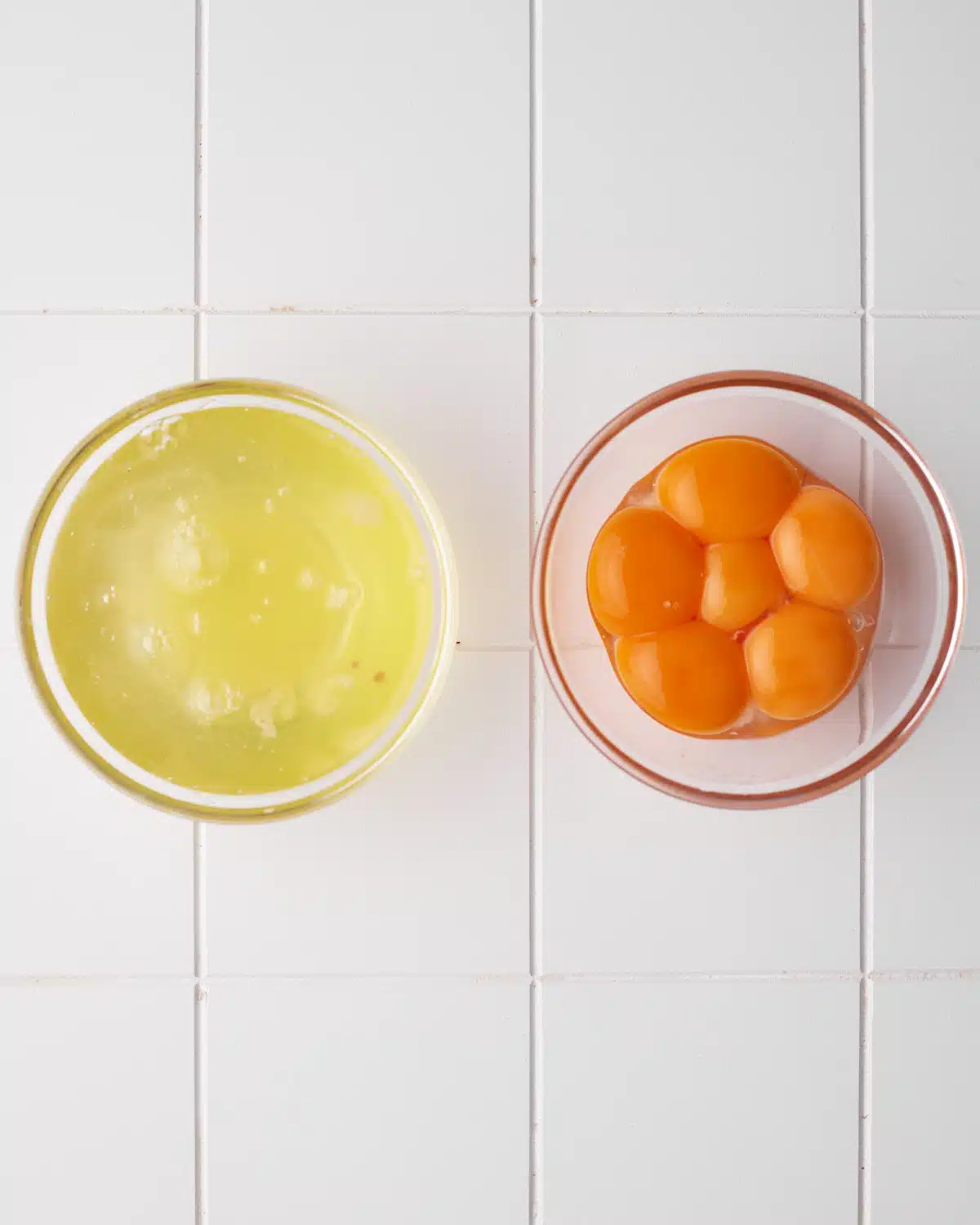
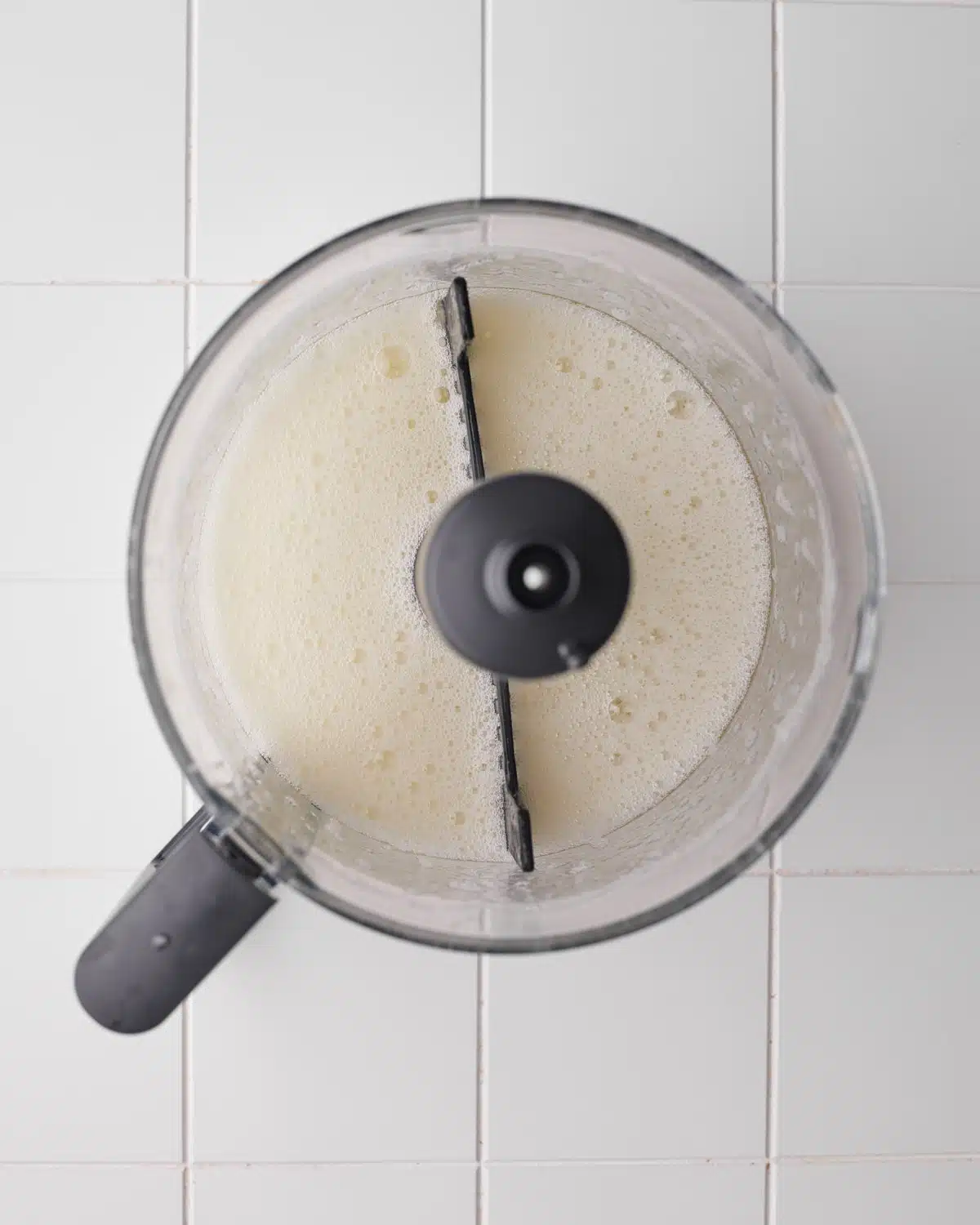
- Continue to whip the meringue. Once it reaches soft peaks, you can add a teaspoon of cornstarch and a pinch of salt. These are both optional. The cornstarch helps to create a nice fluffy meringue, and the salt just adds a little flavor - do not add any more than a small pinch of salt as the meringues have a subtle flavor and the salt will come through.
- Continue whipping until stiff peaks form. Once the meringue is ready, it should be thick and glossy and should hold its shape well on a spoon.
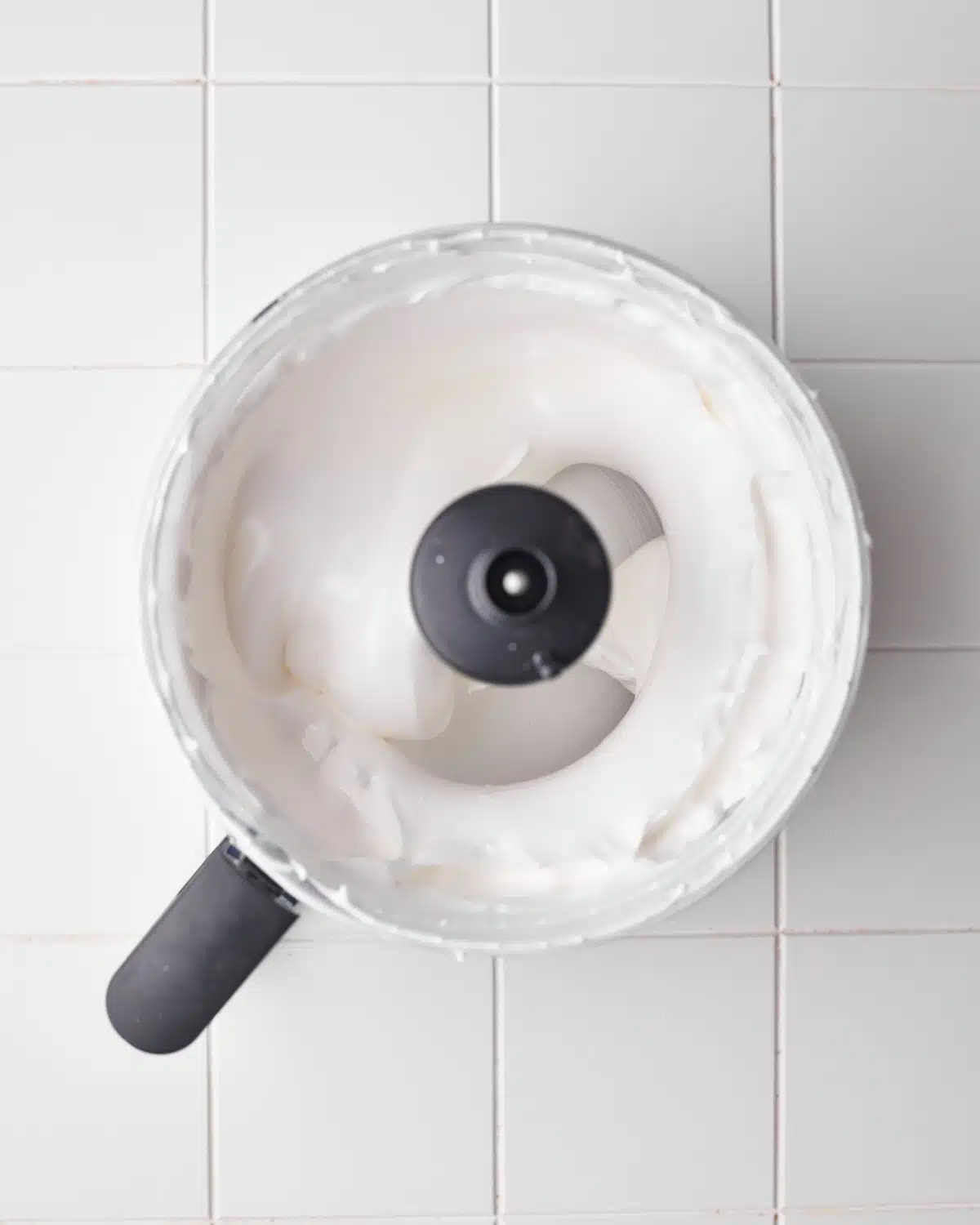
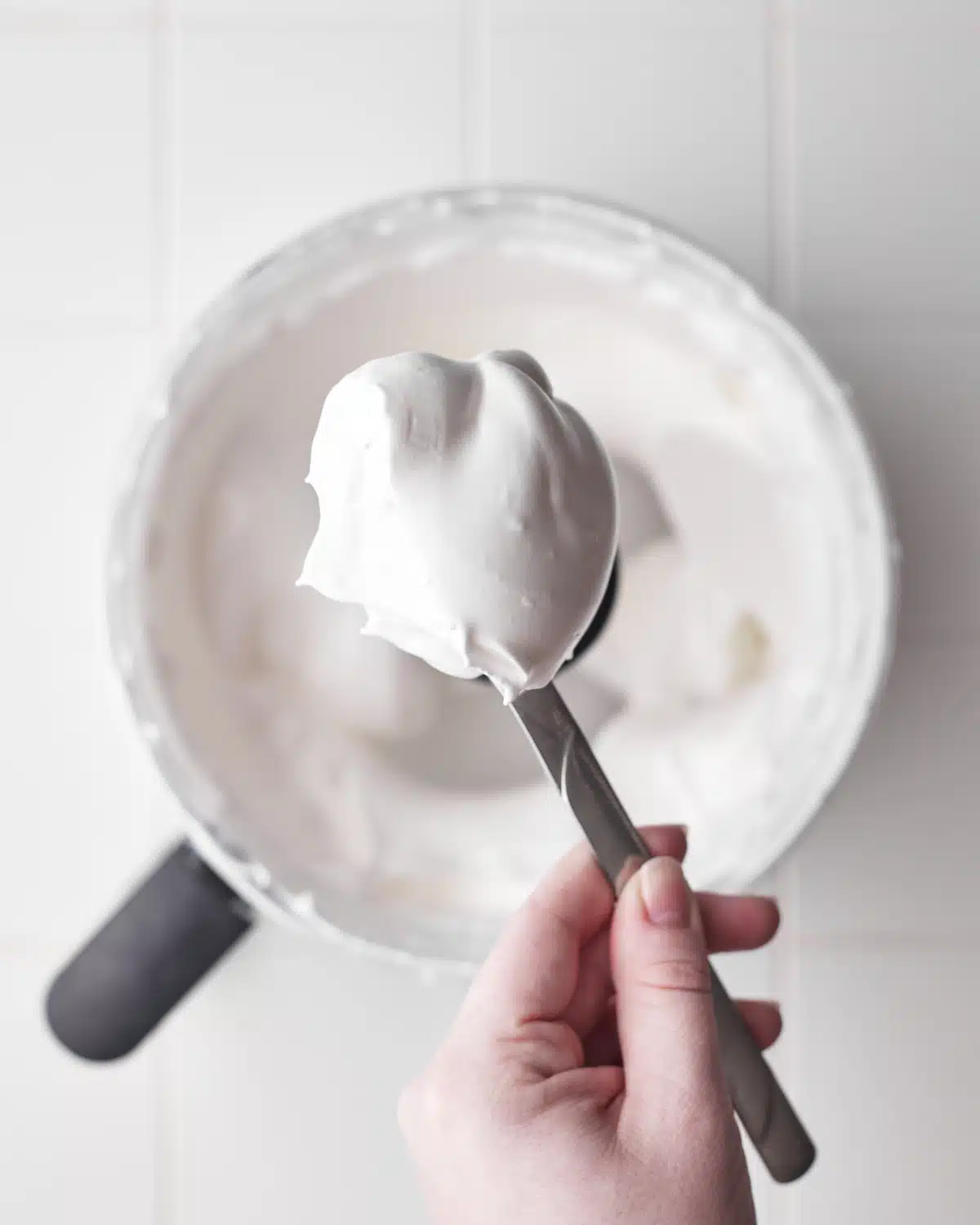
- Leave the meringue mixture in the bowl while you prepare the poaching liquid.
- This floating island dessert recipe poaches the meringues in hot milk, which we will later use for the custard. You could also just poach them in water if you want, but I like that we are using the milk for multiple things, and I think it adds a little flavor to the meringues.
- Put the milk into a deep-sided frying pan or a large saucepan. (I used my Always Pan which was the perfect size and shape for this). Add the vanilla to the milk and mix the two together.
- Warm the milk over medium heat. You don't want to boil the milk, but it should be just before the point of starting to bubble - so hot but not scalding.
- Once the milk is warm enough, shape the meringue using two spoons to scoop it out and smooth the edges. You can make these whatever size and shape you like. I just went for a basic kind of oval shape. This can be a little fiddly, but don't worry too much about the shape as the meringues will puff up as they cook anyway.
- Gently place each meringue into the hot milk and let them float there like little white dumplings. Don't overcrowd the pan as the meringues will puff up, and you don't want them to stick together. You may need to poach your meringues in batches.
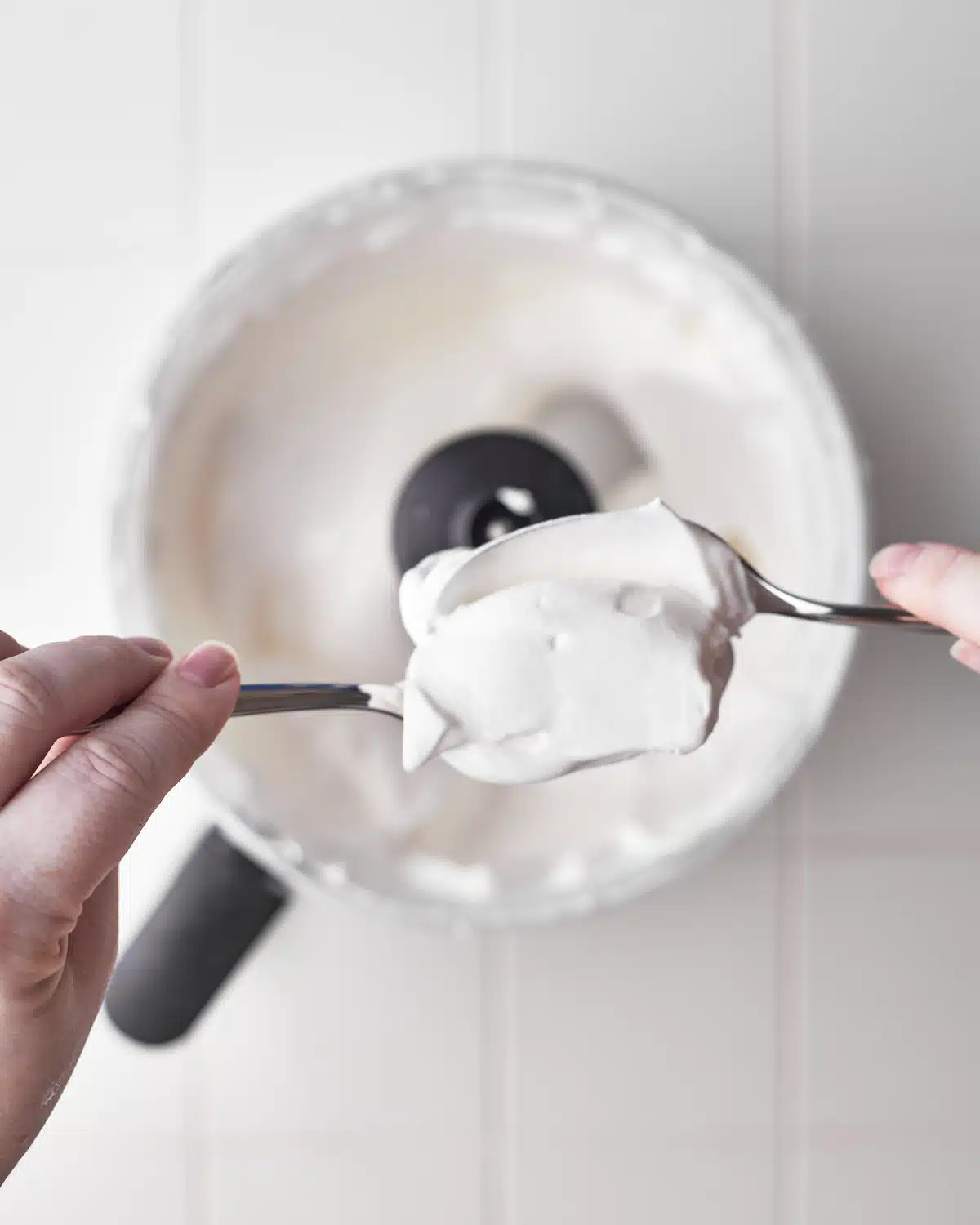
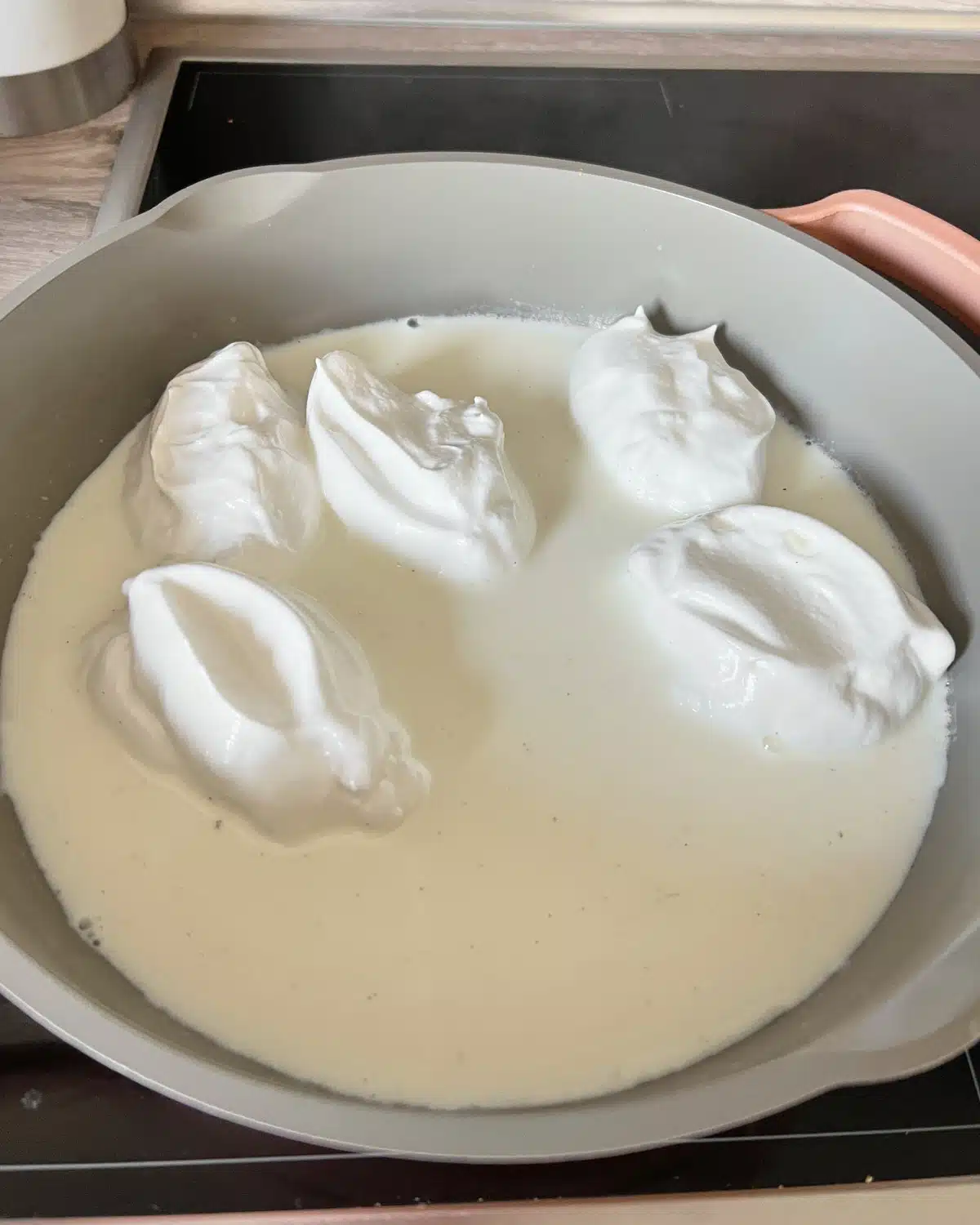
- Let the meringues cook gently in the hot milk for 2 - 2 ½ minutes, then gently flip them over with a large spoon and cook for the same time on the other side.
- Once they are done, very carefully remove them from the milk with a slotted spoon and place them onto a baking tray lined with paper towels to soak up any excess moisture.
- Let the meringues cool on the plate before putting them into the fridge. Note: I did find I have to transfer meringues to a fresh paper towel before moving to the fridge, as the paper towel was saturated with moisture.
- Chill meringues in the fridge until ready to serve.
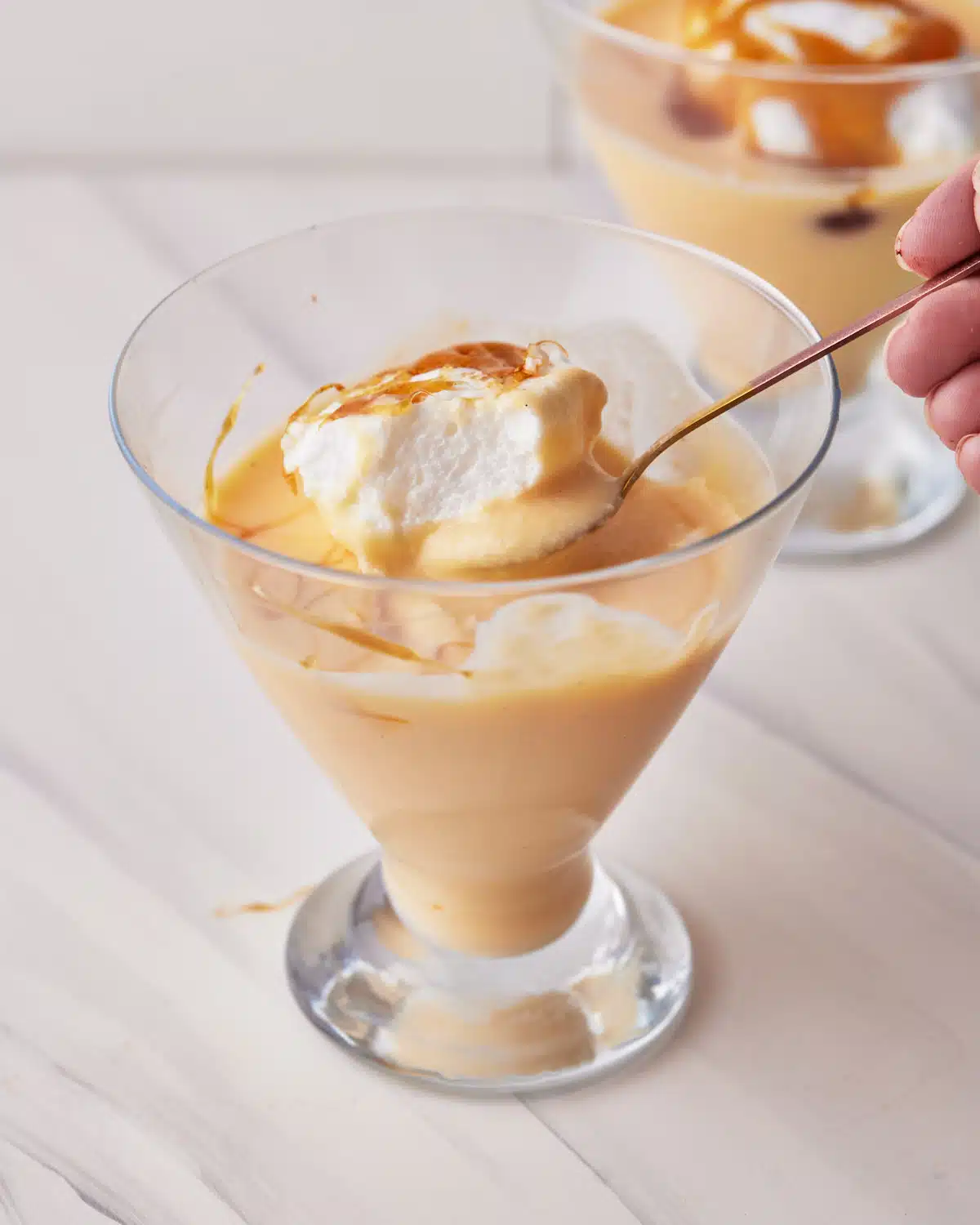
Make the Crème Anglaise
Now for my favorite part of the floating islands dessert - the creamy vanilla custard sauce!
- Take the milk mixture that you used to poach the meringues and pass it through a fine sieve into a measuring jug to remove any lumps of meringue.
- Check the measurements on the jug to see if you need to top it up to have the full 2 cups (500ml) again. If so, top it up as necessary.
- Pour the milk into a clean saucepan and heat over medium-low heat.
- While the milk is heating, put the egg yolks and remaining sugar into a large bowl and whisk together until combined and slightly paler in color.
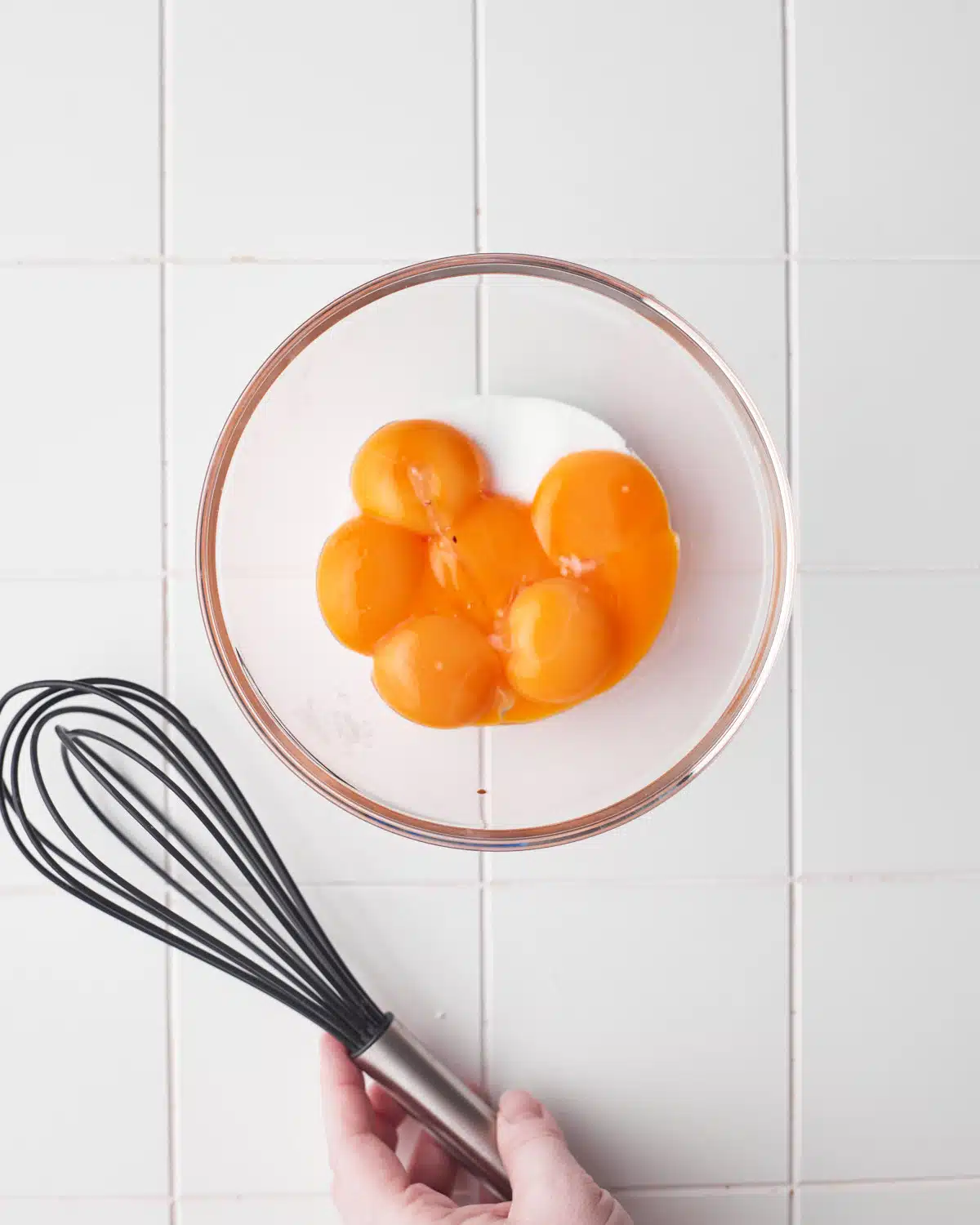
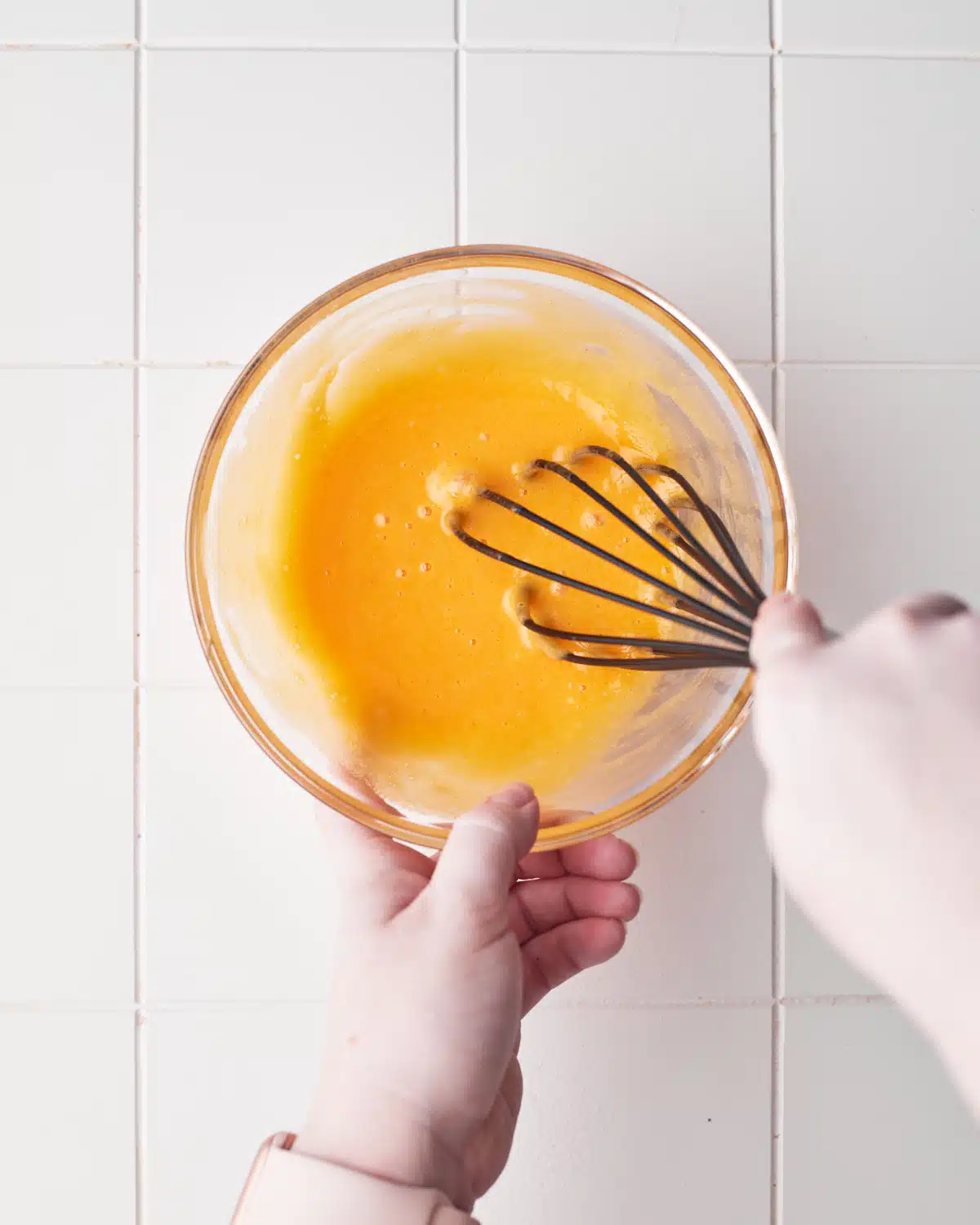
- Once the milk is very warm, but still not too hot to touch, pour a small amount of it into the egg yolk mixture and whisk it in.
- Slowly pour the remaining warm milk into the egg yolks and sugar, whisking as you go. It's important to do this slowly so that you temper the eggs (slowly bring them up to temperature) so that you don't scramble them.
- Once all the milk is incorporated, pour the entire custard mixture back into the saucepan and return to the heat.
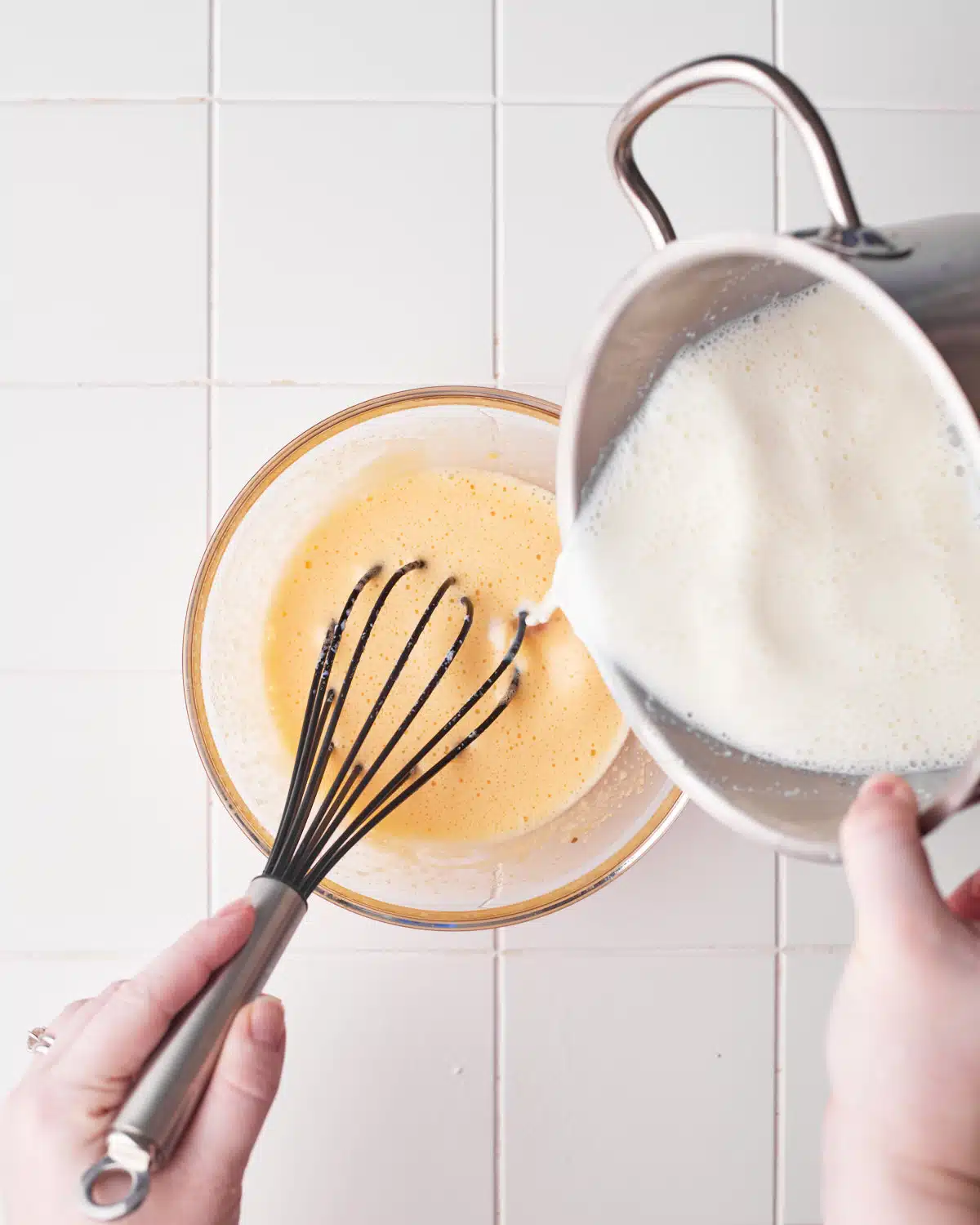
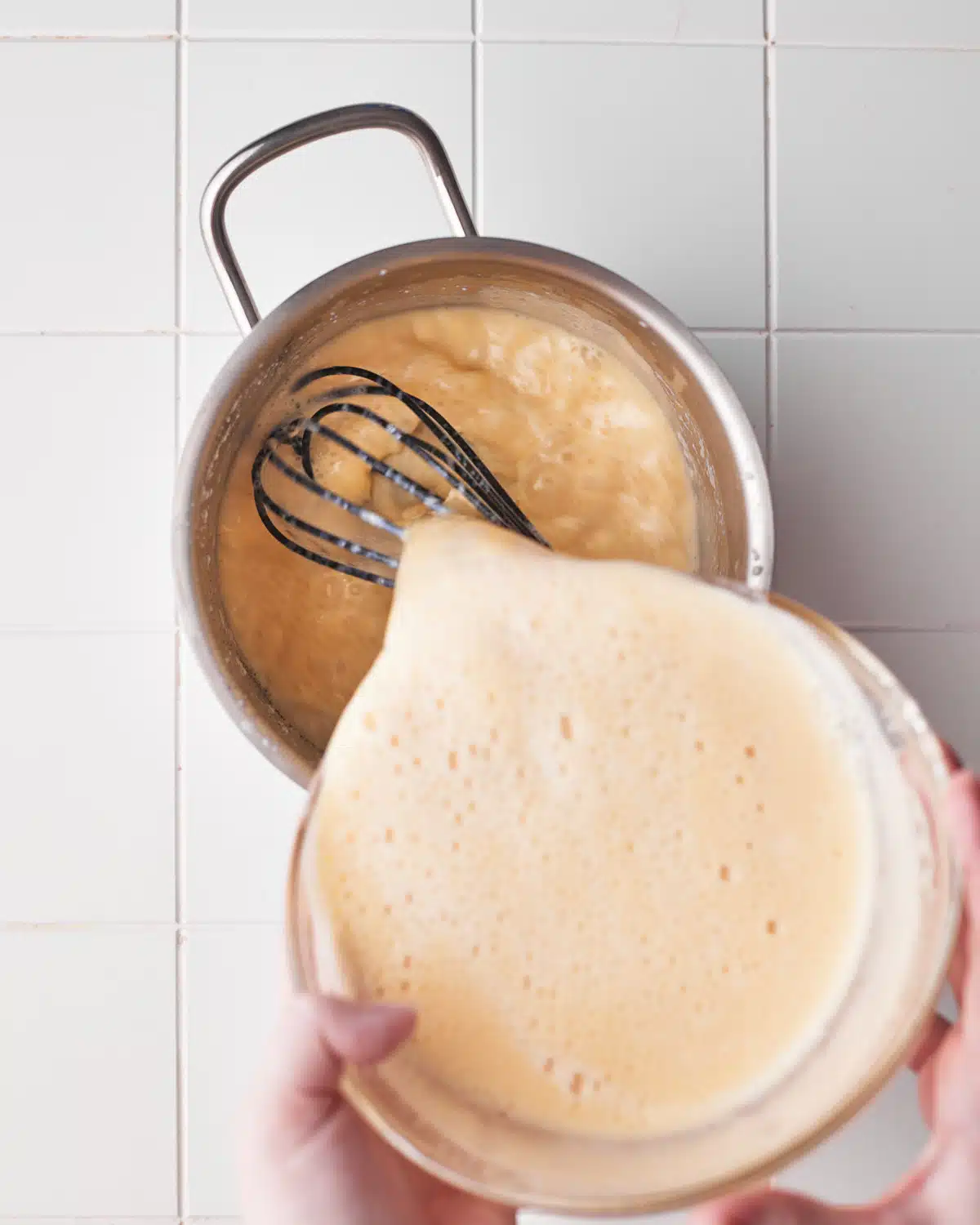
- Cook the custard gradually, stirring constantly with a wooden spoon. Do not stop stirring or you will end up with lumpy custard.
- Keep going until you notice the custard thickens slightly. When it's ready, you should be able to coat the back of a spoon and draw a line through it with your finger. If the line on the back of the spoon holds its shape, the custard is ready.
- Remove from the heat and pass through a fine mesh sieve, just in case you do have any lumps.
- Pour the custard into a bowl and cover with plastic wrap, making sure the plastic touches the surface of the custard to prevent a skin from forming.
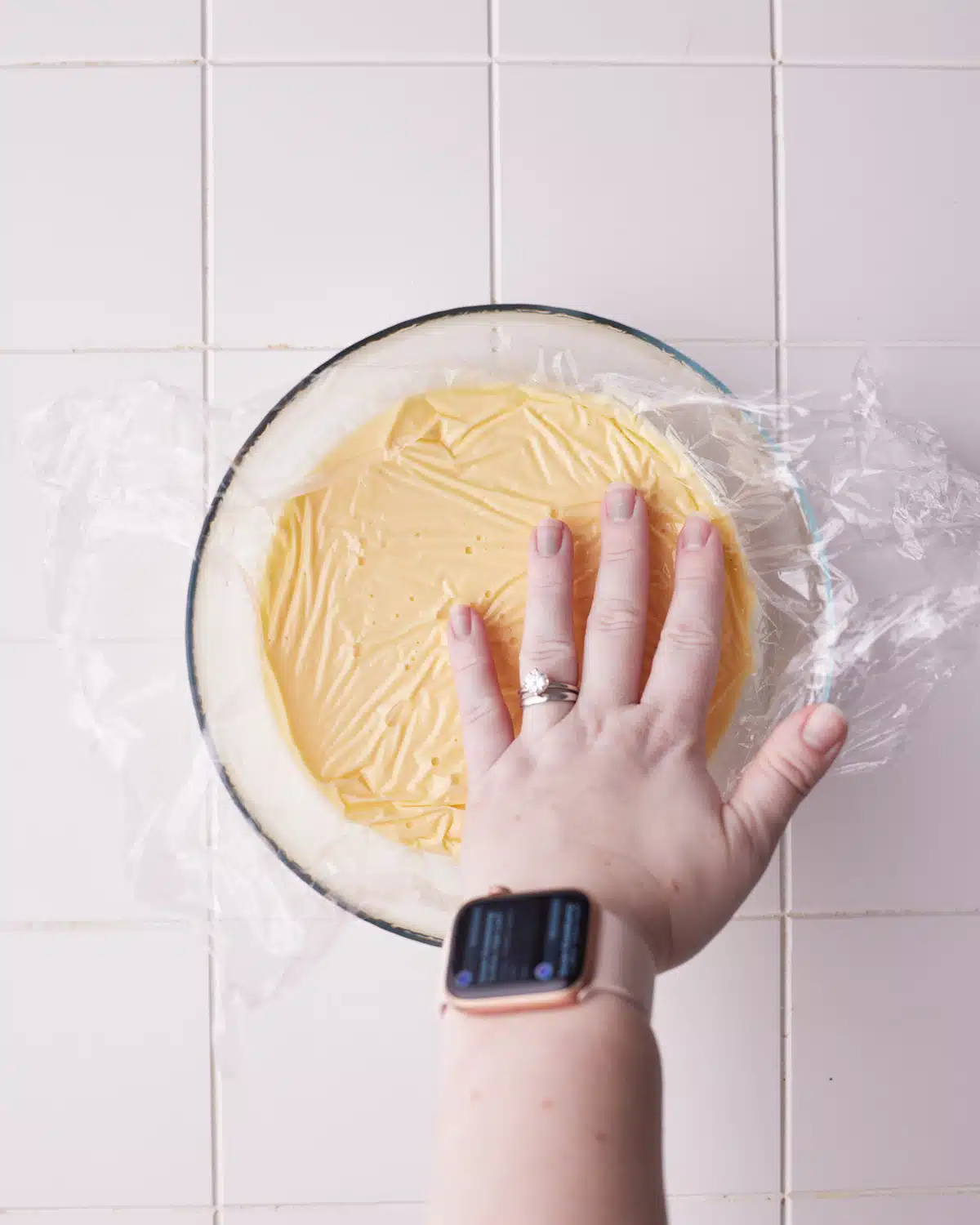
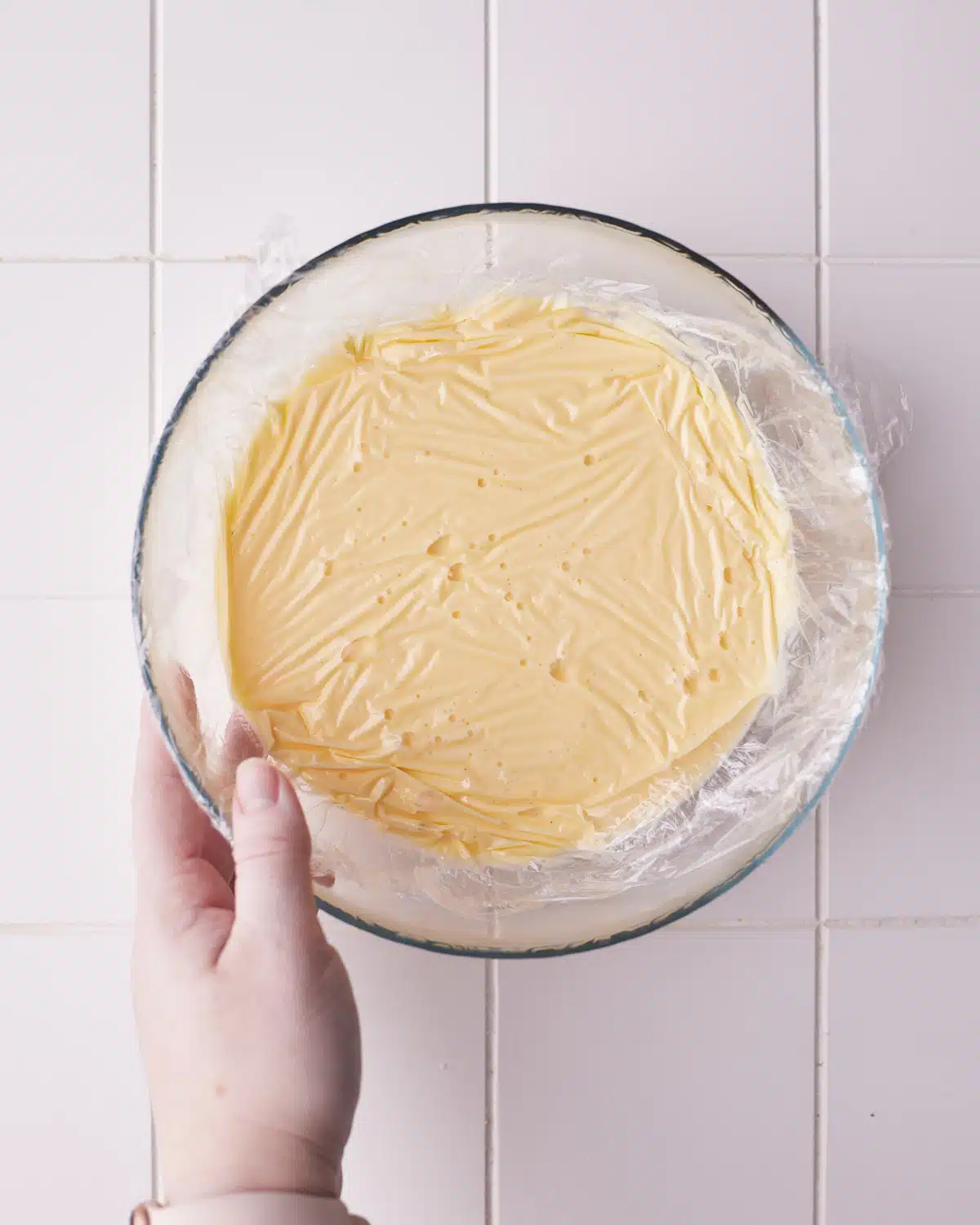
- Let the custard cool and then place it in the fridge to cool completely for at least two hours.
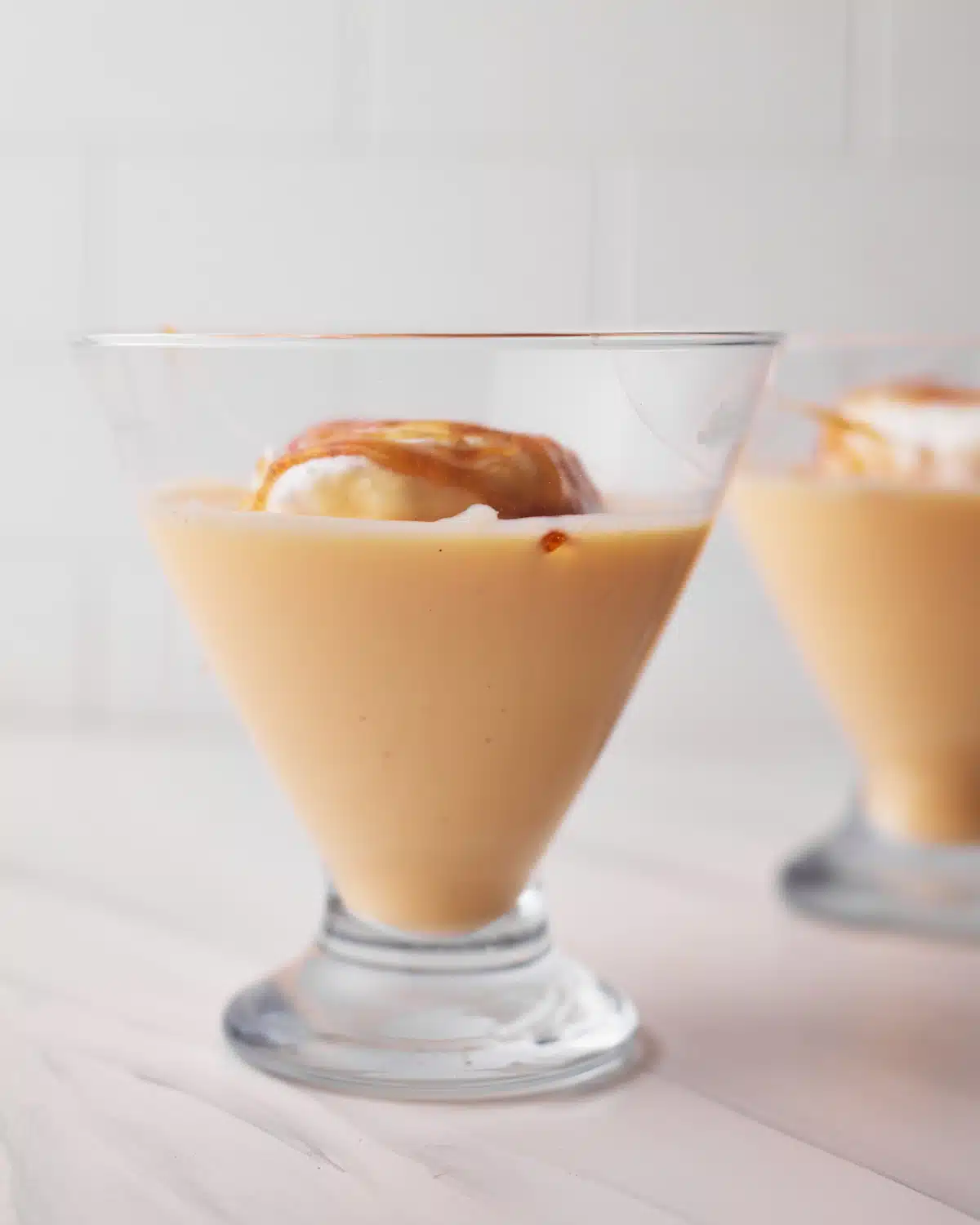
Assemble and Decorate
When you are ready to serve, it's best to assemble the iles flottantes (French for floating islands) before you start making the caramel sauce, as the caramel hardens quickly and you need to move fast. If making caramel from scratch seems like a lot of work, you can also skip this step or top it with something else, like store-bought caramel, fresh berries, or even some toasted nuts or something for a bit of crunch. But here's how to do it the classic way:
- Spoon some of the custard into each of your bowls or serving dishes so each has a pool of crème anglaise in it.
- Gently place one or two of the poached meringues in the middle of the custard, they should just float on top.
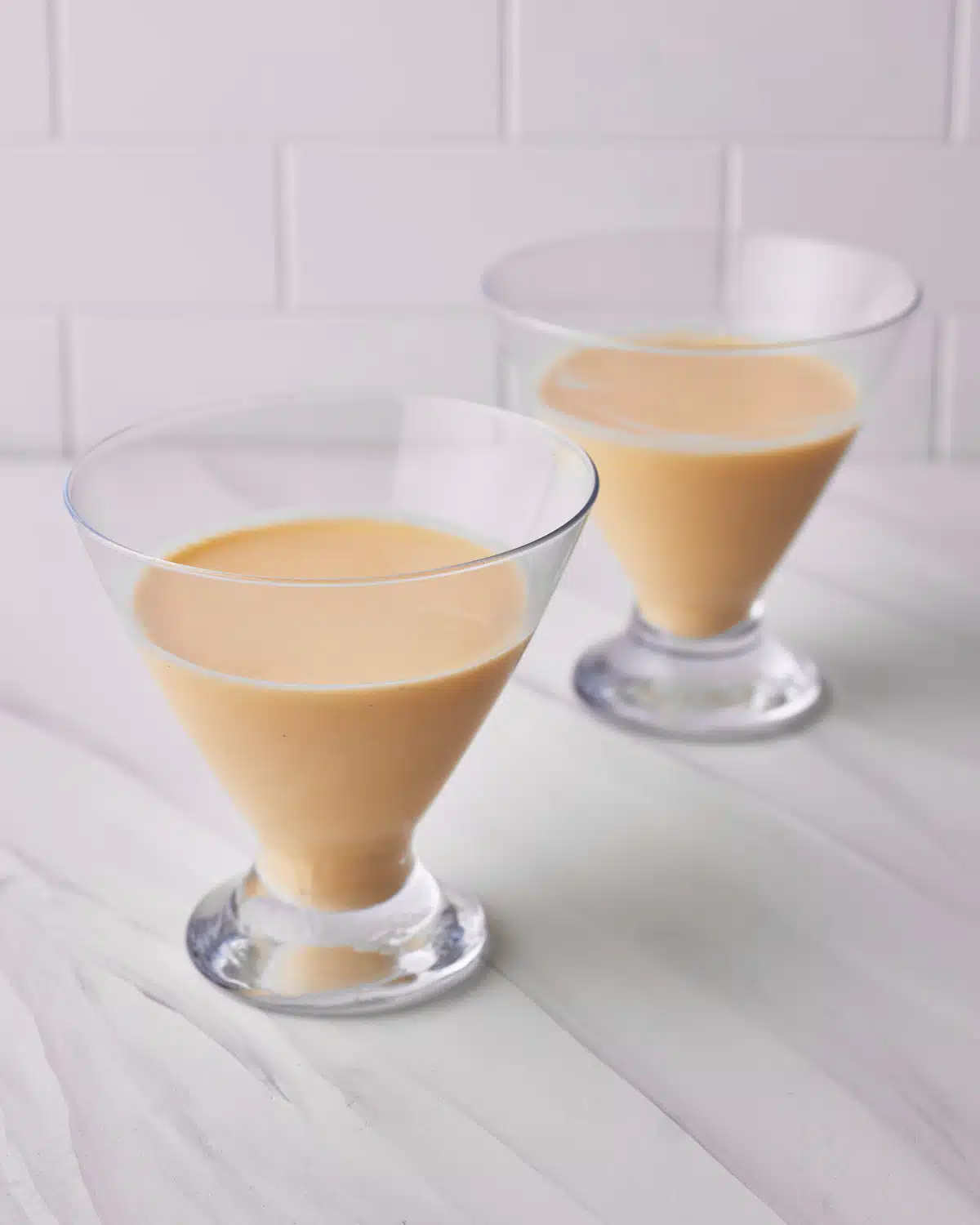
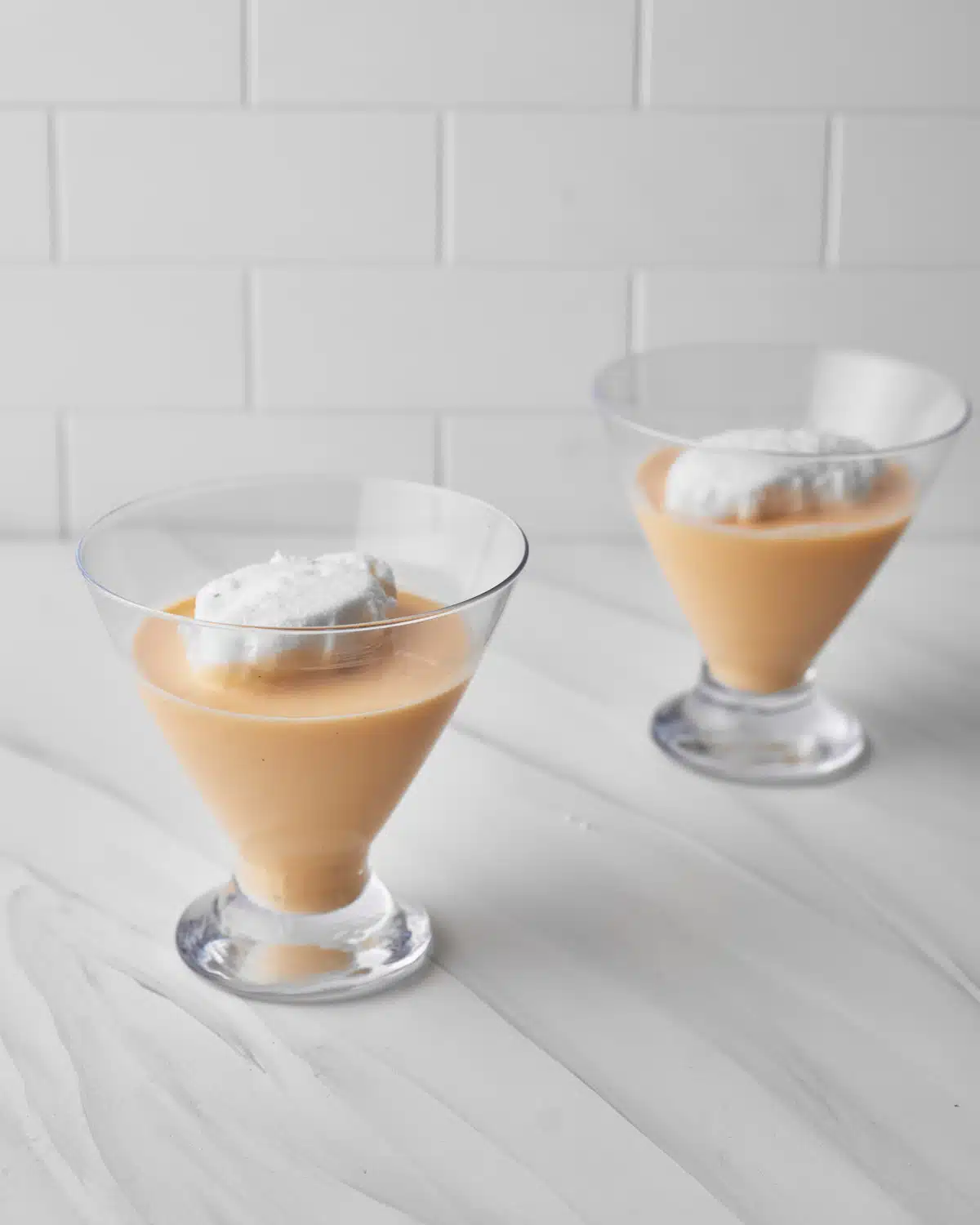
- In a small saucepan, heat some sugar with a splash of water over a medium-high heat. Do not stir, but if crystals start to form you can brush down the sides of the pan with a wet pastry brush.
- Let the sugar come to a boil and watch it closely, once it's boiling, it will start to change color, first a yellow color, then it will darken into an amber color.
- We are looking for a deep amber color. The caramel will continue to cook in the saucepan even after you turn the heat off, so there are two different ways of getting the right color. Either remove the saucepan from the heat while the caramel is still a pale amber color and let it continue to cook, or remove the saucepan from the heat at the right color and immediately submerge the bottom of the pan into some cold water to stop it from cooking further.
- Once the caramel is ready, you need to work quickly, take a spoon and dip it in the caramel, then quickly whisk the caramel on top and around the ile flottante to make thin lines of decorated caramel in a circle all around it. The caramel will begin to harden right away so make sure you move quickly.
- Voila! Your floating island desserts are ready to enjoy!
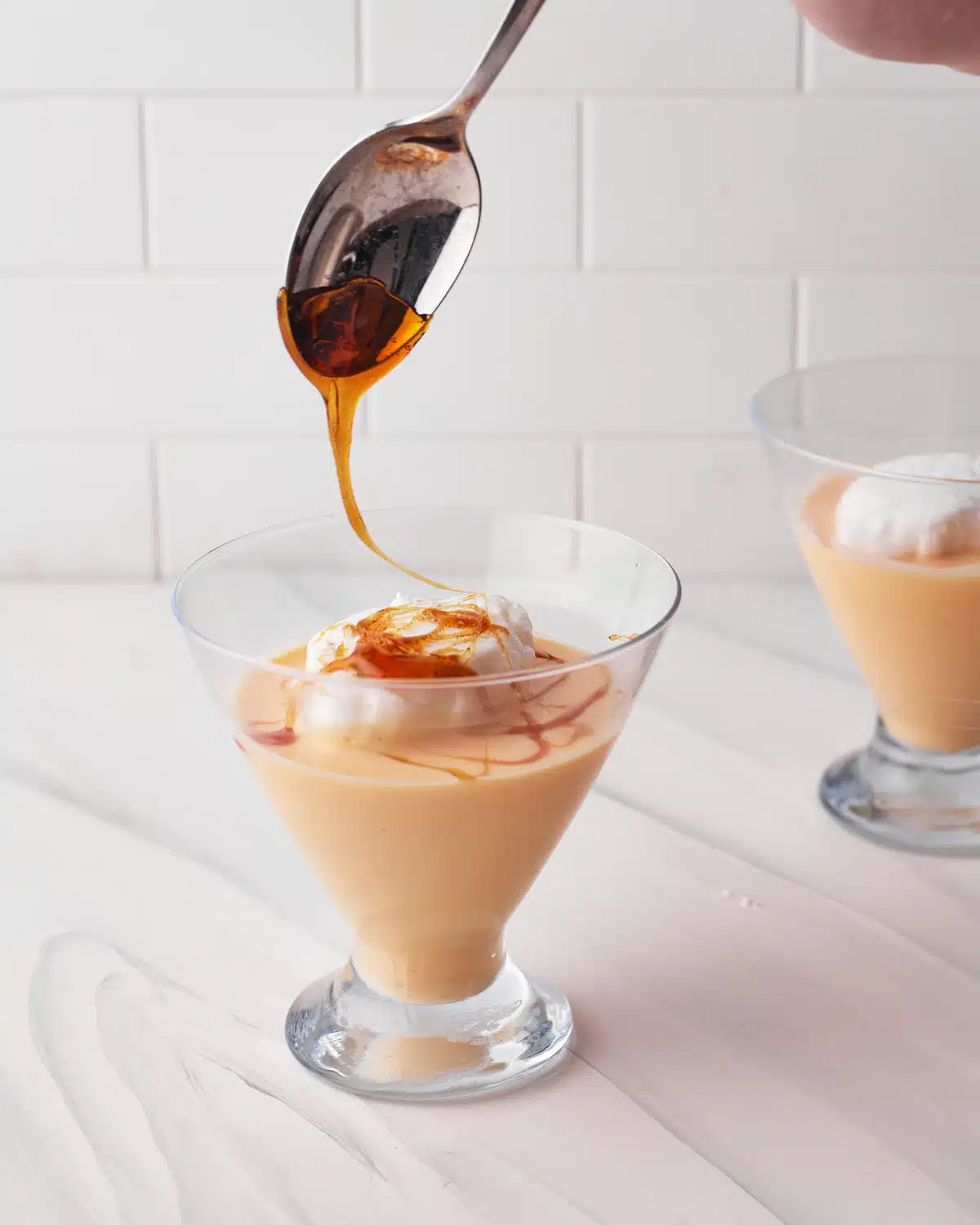
What is Crème Anglaise?
Crème Anglaise is just a form of custard that is liquid and runny - kind of like a custard sauce. In desserts, we often use Crème Patissière, or Pastry Cream, like in my Custard Cake recipe. This is made using the exact same method, but pastry cream uses cornstarch to thicken the custard to make it spreadable and pipable. Creme Anglaise literally translates to 'English Cream' because in the UK we often will cover our cakes and desserts in runny custard.
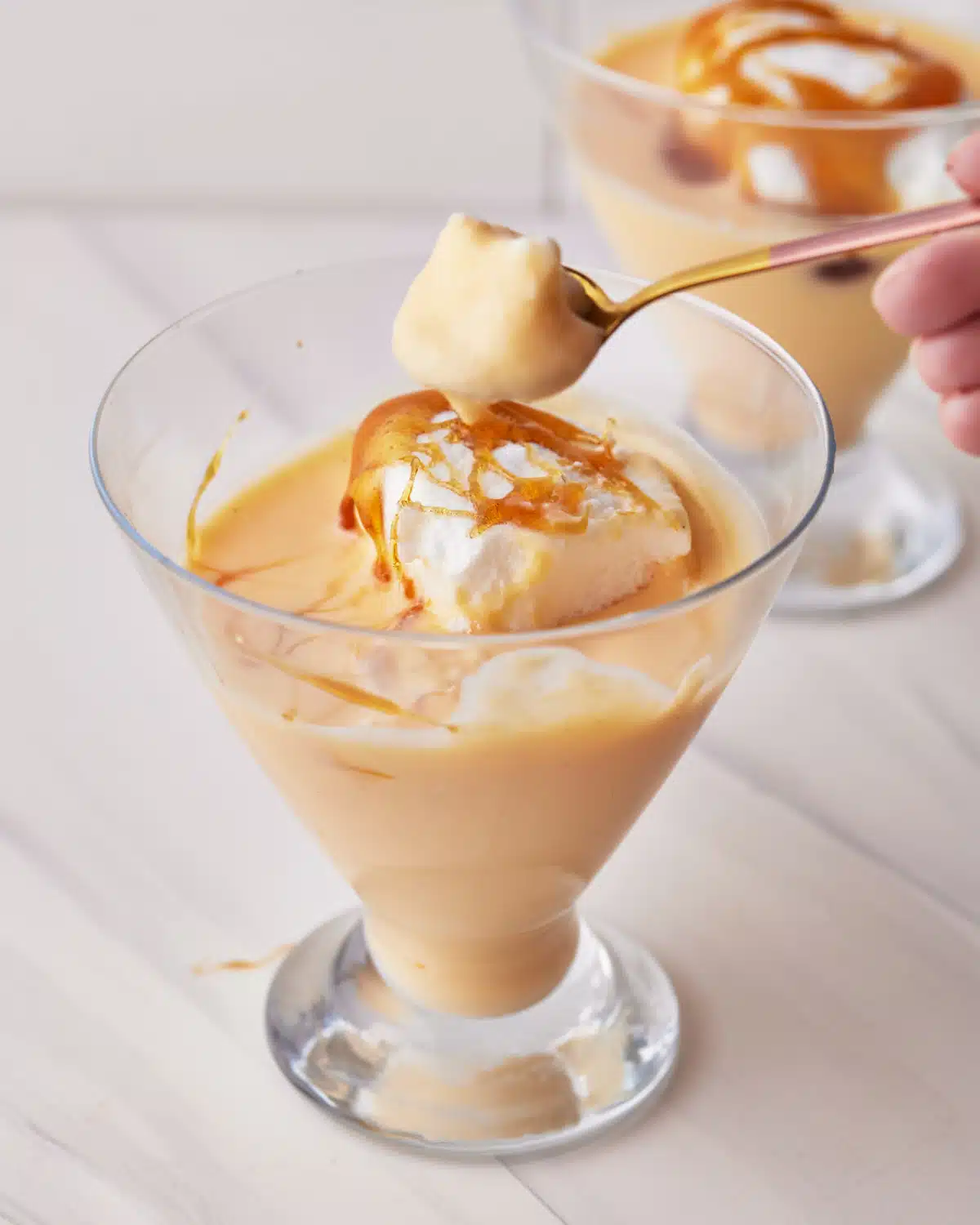
Storage
Once the floating islands are assembled, I recommend serving them right away. But you can make the elements ahead of time.
The creme Anglaise will be good in the fridge for up to 3 days and the poached meringues will be good for 2 days, but make sure you pat them down to remove all excess moisture before storing in an airtight container. If they are wet they will not hold their shape well.
More Fancy French Desserts
If you love these floating islands, try some of these French recipes:
Recipe
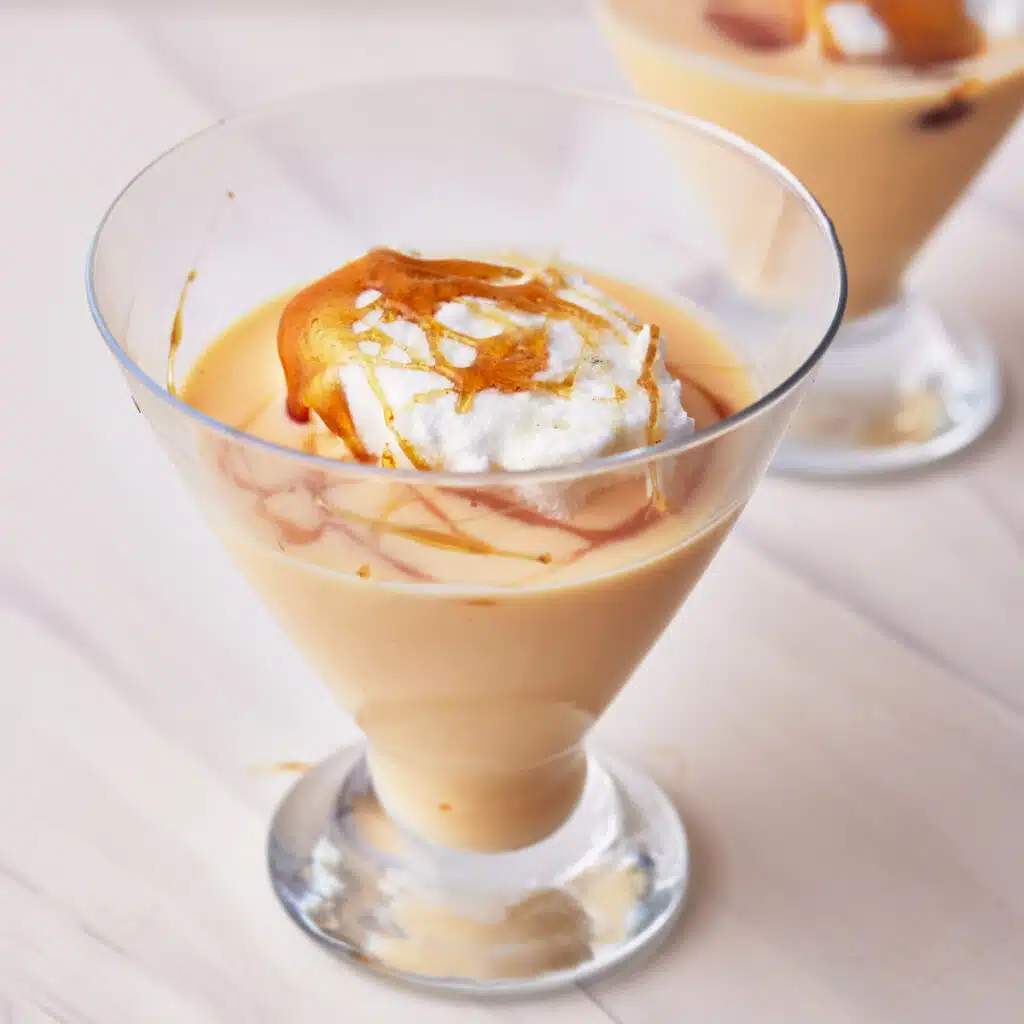
Floating Islands
Ingredients
- 1 ⅓ cup Granulated Sugar 267g
- 6 large Eggs
- 2 cups Whole Milk 500ml
- 1 teaspoon Cornstarch
- 1 pinch Salt
- 1 teaspoon Vanilla Extract
- ⅓ cup Granulated Sugar 67g
- 3 tablespoon Water
Equipment
- Large saucepan
- Stand Mixer or electric whisk
Instructions
- Separate the eggs into whites and yolks, set the yolks aside for making the custard later.6 large (6) Eggs
- Whip the egg whites until they start to foam.
- Measure out 1 cup of the sugar and slowly begin adding it to the egg whites, one tablespoon at a time, whipping in between additions until it is all incorporated.1 ⅓ cup (267 g) Granulated Sugar
- Add the cornstarch and a pinch of salt and keep whipping until the meringue reaches stiff peaks. It should be thick and glossy and hold its shape.1 teaspoon Cornstarch, 1 pinch Salt
- Heat the milk and vanilla over medium heat in a deep-edged frying pan or large saucepan. Don't let it boil, you want it to be just before the point of small bubbles forming.2 cups (500 ml) Whole Milk, 1 teaspoon Vanilla Extract
- Use two spoons to shape your meringue into whatever shape you like, I just passed the meringue back and forth between the spoons to make smooth edges.
- Gently place each meringue shape into the hot milk. Don't overcrowd the pan, the meringues will expand slightly while they are in there. Let them poach for 2 minutes, then flip them over and do 2 minutes on the other side.
- Gently remove the poached meringues and place them on a plate with paper towels to soak up the excess liquid. Let them cool here before transferring to the fridge for at least 2 hours.
- Strain the milk from poaching the meringues to remove any pieces of meringue, and top it up if needed so you have 2 cups of milk again. Return to the heat in a clean saucepan and begin to warm it again.
- Whisk the egg yolks with the remaining sugar (about ⅓ cup) until they are combined and turn a slightly paler color.
- Once the milk feels hot, but not scalding, pour a small amount of it into the egg yolk/sugar mixture and mix it in.
- Gradually add the rest of the hot milk, being sure to go slowly so you don't scramble the eggs with the heat.
- Once all the milk is incorporated, pour the whole mixture back into the saucepan and return to the heat.
- Continue to heat, mixing constantly, until the mixture thickens slightly. When it's ready, you should be able to coat the back of a spoon and draw a line through the custard and have the line hold its shape.
- Transfer to a bowl and cover with plastic wrap, making sure the plastic touches the top of the custard to prevent a skin from forming. Let cool and eventually transfer to the fridge until ready to serve.
- When you are ready to serve, spoon some of the chilled custard into your bowls or serving dishes.
- Gently place one or two of the poached meringues on top of the custard, it should just float on top. It's best to prepare these before you make the caramel as you will need to work quickly once the caramel is ready.
- Heat the sugar in a saucepan with a splash of water, over medium-high heat. Let it come to a boil.⅓ cup (67 g) Granulated Sugar, 3 tablespoon Water
- Once the sugar is boiling, watch it closely, it will look clear and then it will start to gain some color, first a little yellow and then amber.
- Once it reaches a deep amber color, remove it from the heat and immediately use a spoon to drizzle the caramel in circles over the floating islands. Work quickly as the caramel hardens very fast.

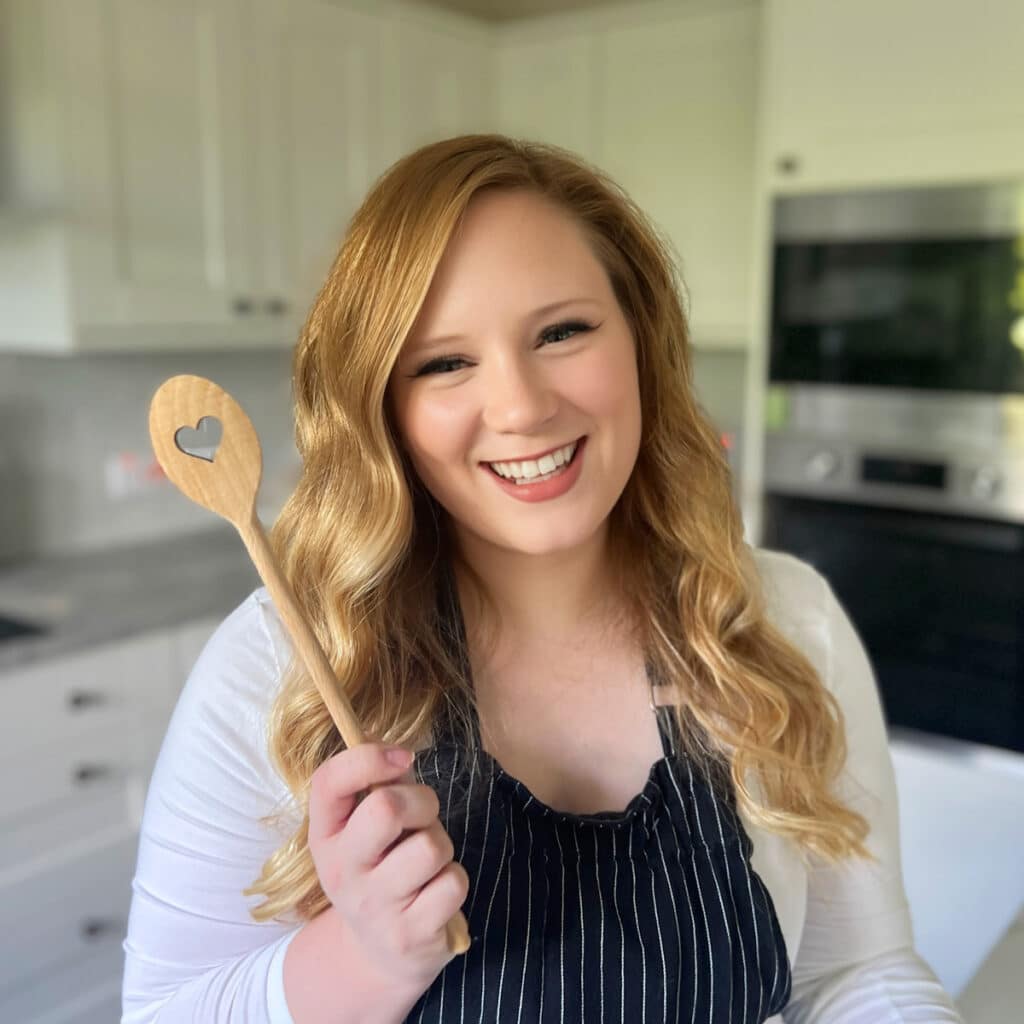
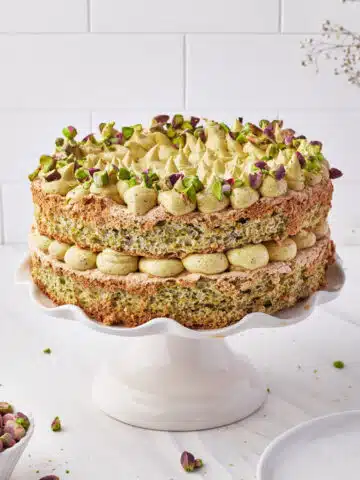
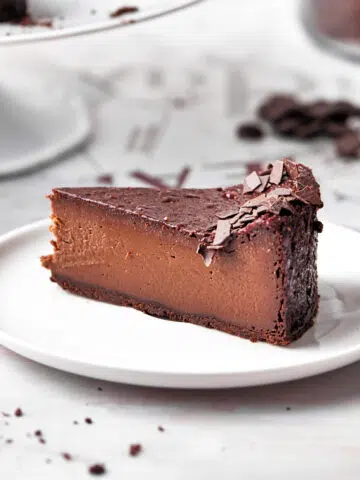
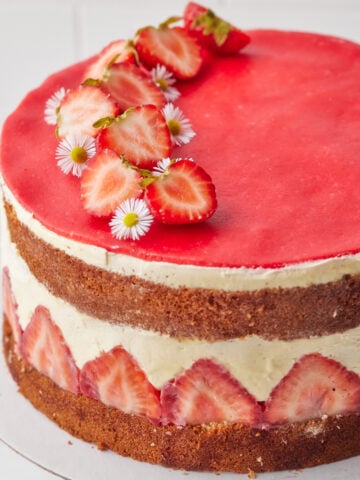


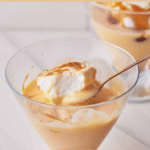
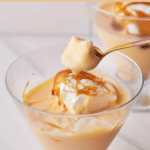
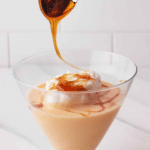
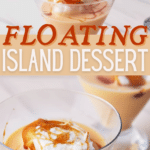
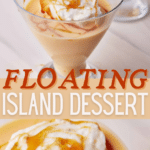
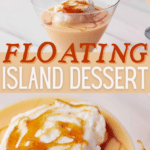
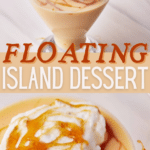
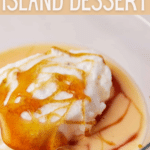
G Peter Pushkas
We have the same dessert in Hungary. It is called "Bird's milk" and we used to have it made for us when we were sick. It was almost worth it to get ill! Thank you for the excellent recipe and detailed instructions.
Jules Grasekamp
That is so interesting! I love hearing how desserts are enjoyed all over the world!
I'm so glad you enjoyed the recipe 🙂
Jules
Lewis
These look better than the ones I tried in Paris!
Lydia Taypott
Had never heard of these - time to try something new! They look awesome!
Chris
SNOW EGGS! I want to eat these so BAAAD! These look amazing! What a cool idea for a dessert.